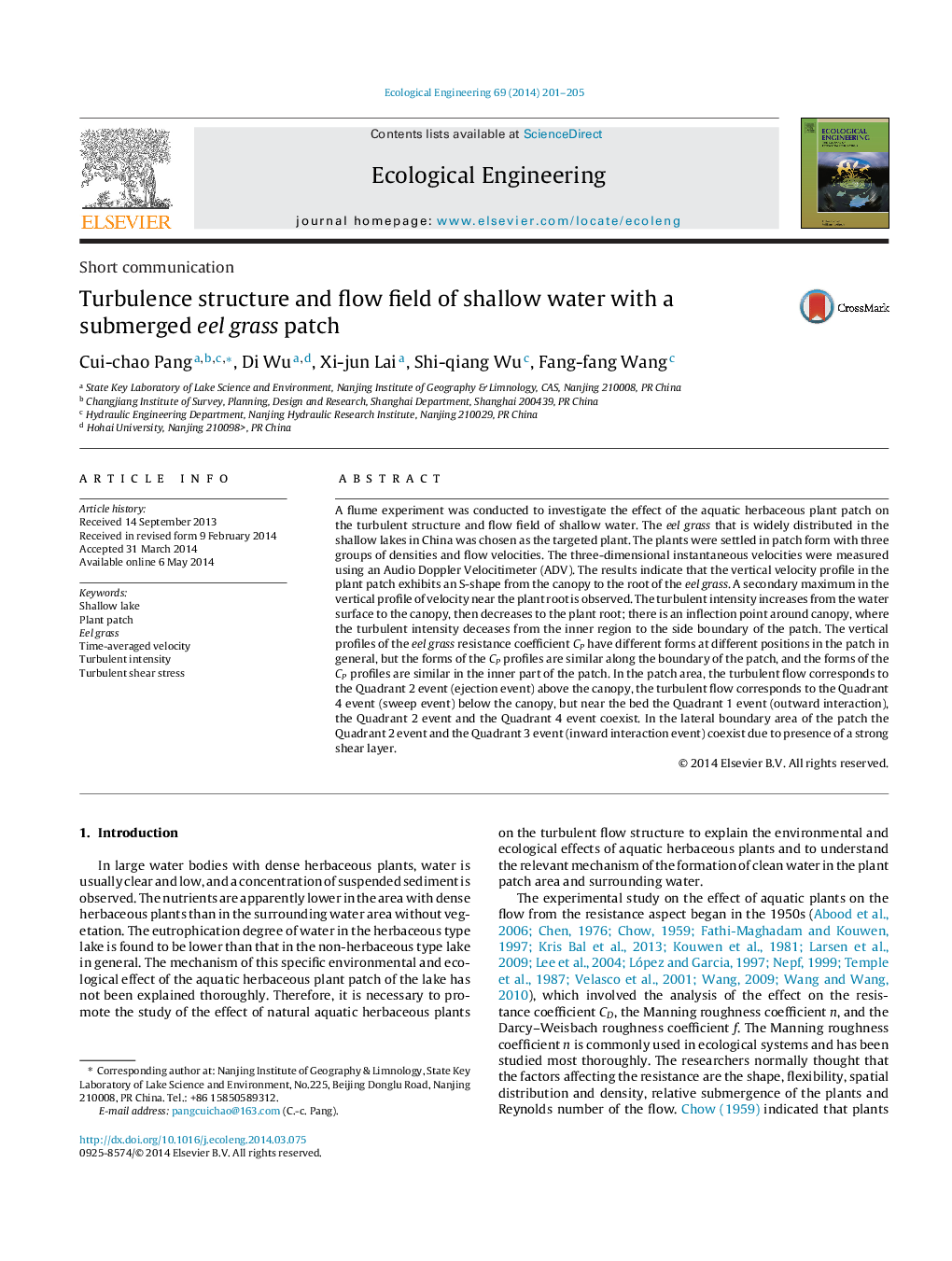| Article ID | Journal | Published Year | Pages | File Type |
|---|---|---|---|---|
| 4389392 | Ecological Engineering | 2014 | 5 Pages |
A flume experiment was conducted to investigate the effect of the aquatic herbaceous plant patch on the turbulent structure and flow field of shallow water. The eel grass that is widely distributed in the shallow lakes in China was chosen as the targeted plant. The plants were settled in patch form with three groups of densities and flow velocities. The three-dimensional instantaneous velocities were measured using an Audio Doppler Velocitimeter (ADV). The results indicate that the vertical velocity profile in the plant patch exhibits an S-shape from the canopy to the root of the eel grass. A secondary maximum in the vertical profile of velocity near the plant root is observed. The turbulent intensity increases from the water surface to the canopy, then decreases to the plant root; there is an inflection point around canopy, where the turbulent intensity deceases from the inner region to the side boundary of the patch. The vertical profiles of the eel grass resistance coefficient CP have different forms at different positions in the patch in general, but the forms of the CP profiles are similar along the boundary of the patch, and the forms of the CP profiles are similar in the inner part of the patch. In the patch area, the turbulent flow corresponds to the Quadrant 2 event (ejection event) above the canopy, the turbulent flow corresponds to the Quadrant 4 event (sweep event) below the canopy, but near the bed the Quadrant 1 event (outward interaction), the Quadrant 2 event and the Quadrant 4 event coexist. In the lateral boundary area of the patch the Quadrant 2 event and the Quadrant 3 event (inward interaction event) coexist due to presence of a strong shear layer.
